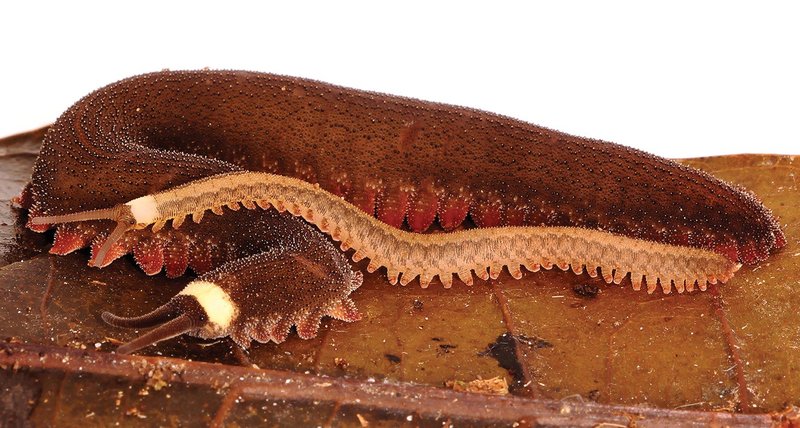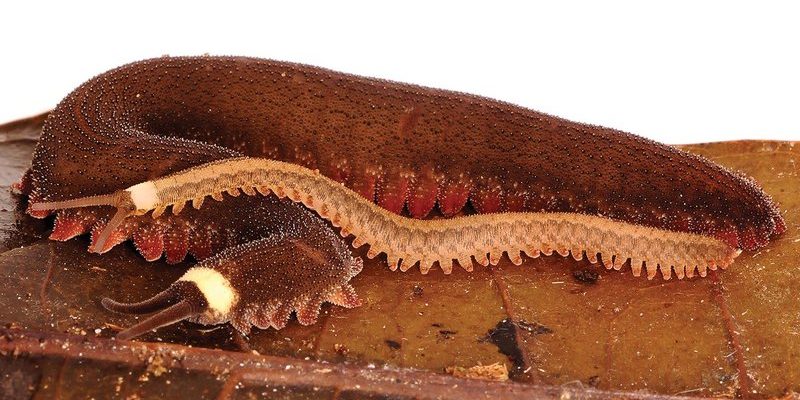
Think of a microclimate as a cozy corner of the natural world—like that perfect spot in your home where the sunlight hits just right. For velvet worms, these microclimates are crucial for their survival. They live in rainforests and moist, humid environments where conditions are just right. The way they navigate these environments can teach us a lot about how organisms adapt and thrive.
What Are Velvet Worms?
Velvet worms are amazing little creatures, often described as living fossils. They’re part of a group of animals that can be traced back about 500 million years. Imagine a time when the Earth was full of strange creatures now long gone, and velvet worms were already wandering the land. They have a soft, velvety body covered in tiny bristles, giving them a unique look that’s hard to forget.
These creatures can grow up to 15 centimeters long, depending on the species, and they can be found in tropical and subtropical regions around the globe. Velvet worms are nocturnal, which means they’re most active at night. During the day, they hide under logs or in leaf litter, seeking shelter from predators and the elements. Here’s a fun fact: they’re not insects or worms, but rather belong to their own unique group of animals, bridging the gap between arthropods (like insects and spiders) and annelids (like earthworms).
Why Microclimates Matter
Now, let’s talk about microclimates. A microclimate refers to the specific climatic conditions in a small area, often different from the broader climate around it. Think of it this way: your backyard might be sunny while your neighbor’s yard is shaded by big trees. For velvet worms, these small pockets of suitable conditions can mean the difference between life and death.
Microclimates are essential for velvet worms because they need high humidity and stable temperatures to thrive. They typically live in damp, leaf-covered areas where moisture is abundant. This environment helps them avoid dehydration, which can quickly lead to their demise. Without the right microclimate, velvet worms wouldn’t be able to hunt or reproduce effectively.
Preferred Habitat Characteristics
Velvet worms have distinct habitat preferences that align perfectly with their physiological needs. They thrive in the cool, moist conditions found in leaf litter, under logs, and in crevices of rocks. These habitats offer not only shelter but also a rich diet of insects, which is crucial for their survival.
Here are some key characteristics of velvet worm habitats:
- Humidity: Velvet worms require high humidity levels, often above 70%. This moisture helps keep their bodies hydrated.
- Temperature: They prefer temperatures between 15oC and 25oC (59°F to 77°F). Too hot or too cold can stress them out.
- Cover: Dense vegetation and organic debris provide them with hiding spots and hunting grounds.
Finding these specific conditions is critical for their survival, and even slight changes in the environment can affect their populations.
The Role of Temperature and Humidity
Temperature and humidity are the stars of velvet worm survival. When we talk about the temperature range they enjoy, it’s like finding the sweet spot in a Goldilocks story—neither too hot nor too cold. Velvet worms can lose moisture quickly if conditions are too dry, which is why they stick to moist habitats.
Humidity plays a significant role in their behavior as well. In the right conditions, they come out to hunt and mate. If it gets too dry, they might remain hidden to conserve moisture, which impacts their ability to find food. The balance between temperature and humidity creates a tightrope they walk every day. Their ability to thrive depends on these factors, making them sensitive indicators of environmental changes.
How Microclimates Affect Behavior
You might be wondering how these microclimate preferences influence velvet worm behavior. Well, they’re masters of adapting to their surroundings. In ideal conditions, velvet worms are more active, hunting for food and mating. But when conditions change—like during a dry spell—they retreat into their cozy hiding spots to avoid dehydration.
This behavior reinforces the idea that they are not just passive residents of their environment; they actively seek out the right conditions to thrive. For example, during the hottest parts of the day, they’ll stay hidden to conserve moisture. At night, when humidity rises, they might come out to hunt for insects or other tiny critters. Their behavior is a perfect dance with their environment, showcasing how life can adapt to thrive in specific conditions.
Conservation and Environmental Concerns
Velvet worms play an important role in their ecosystems. They help control insect populations and are a part of the food web. However, their unique habitat preferences make them vulnerable to changes in the environment. Deforestation and climate change pose serious threats to their microclimates and, consequently, their survival.
Conservation efforts focus on preserving the delicate habitats where these creatures live. Protecting rainforests and other damp environments is crucial not just for velvet worms but for many other species that rely on these microclimates. Educating people about these fascinating creatures can also help raise awareness about the importance of biodiversity and the need to protect natural habitats.
In summary, velvet worms might be small and often overlooked, but they’re remarkable creatures that tell us a lot about our ecosystems. Their microclimate preferences highlight the delicate balance many beings must maintain to survive, adapt, and thrive. By understanding these unique creatures and their habitats, we can appreciate the intricate web of life that surrounds us.
Next time you find yourself in a damp forest, take a moment to think about the velvet worms living beneath your feet. With their fascinating adaptations and critical role in nature, they remind us of the wonders of life, even in the tiniest corners of our planet.

